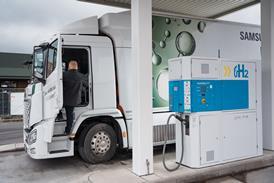A recent scientific study has revealed that the European Union’s plans to implement hourly matching of green hydrogen production with variable renewables generation starting in 2030 will result in a cost increase of more than 25% for green hydrogen. The study, conducted by researchers in the United States and Germany, also found that these strict rules are unlikely to significantly reduce overall power sector emissions.

The EU’s Delegated Acts on Renewable Fuels of Non-Biological Origin (RFNBOs), encompassing green hydrogen and its derivatives, currently outline regulations that involve matching green hydrogen production with renewables generation on a monthly basis until 2030. Post-2030, producers will face a stricter requirement: demonstrating hourly that their electrolysers exclusively consumed renewable energy generated within the same hour.
In addition to the hourly matching, the Delegated Act introduces an “additionality” clause, mandating that all electricity consumed for green hydrogen production must originate from renewables projects specifically developed to support this purpose. This provision aims to prevent renewable hydrogen production from utilising clean electricity that would otherwise contribute to the grid, potentially necessitating the use of fossil-fuel power plants and increasing emissions.
A study examining hourly simultaneity modeling has indicated that the levelised cost of green hydrogen (LCOH) would average €4.58 per kilogram under hourly correlation, compared to €3.32 under a more flexible annual correlation. The EU’s existing monthly simultaneity requirement, in effect until 2030, would only result in approximately a 10% cost increase compared to the flexible scenarios.
Furthermore, the study has found limited evidence suggesting that green hydrogen production without an hourly simultaneity requirement would lead to an increase in power sector emissions. Instead, it suggests that power sector emissions could slightly decrease due to ongoing trends in the energy transition.
Based on these findings, the study’s authors recommend adopting a more flexible definition of green hydrogen, incorporating an annual additionality criterion and eliminating the strict hourly simultaneity requirement. Under this approach, producers would only need to demonstrate the purchase of an equivalent amount of renewable energy as the electricity consumed annually, rather than every hour. Such flexibility would empower project investors and operators to consider various factors, including responding to renewable production availability, market prices, and hydrogen demand patterns.


















